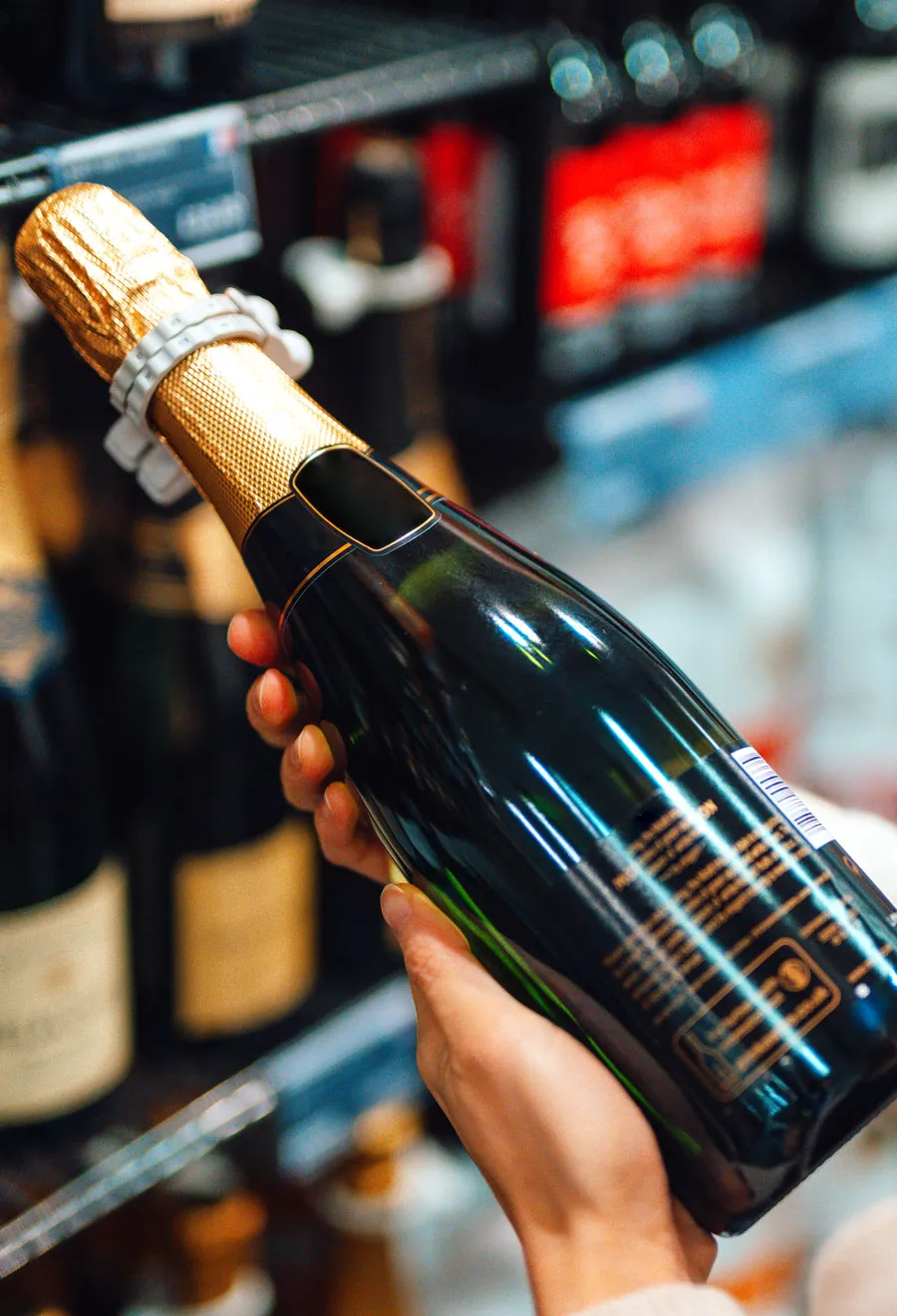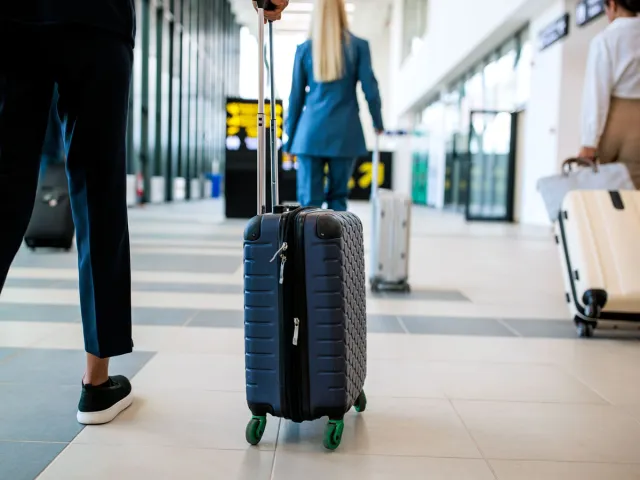Whether you’re traveling with your grandmother’s famous pumpkin pie or an authentic bottle of limoncello from Italy, you’ve probably asked yourself: Can I fly with this? The rules can certainly be confusing, as there are several agencies that work together to determine what’s allowed, including the Transportation Security Administration (TSA), U.S. Customs and Border Protection (CBP), U.S. Department of Agriculture (USDA), and the Federal Aviation Administration (FAA). Here’s what you should know before packing that go-to snack or special souvenir.
Solid Foods
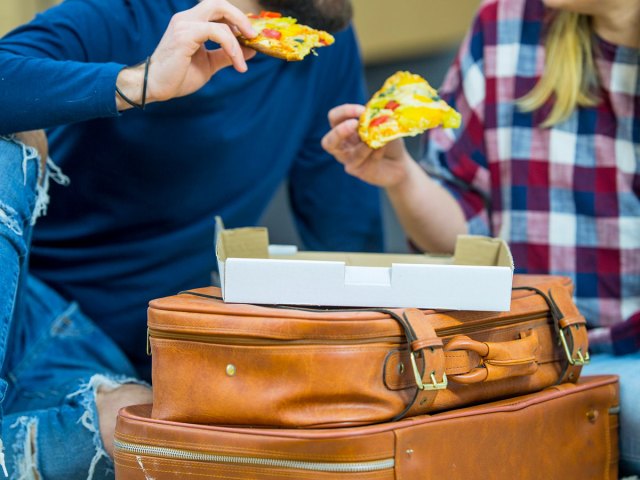
Good news for hungry travelers: You can bring a variety of solid foods in both your carry-on and checked bag, regardless of whether you prepared the food yourself or purchased it during your trip. (Flying with fresh fruits, vegetables, meats, or cheeses? More on that below.)
The solid food category includes everyday snack items such as cereal, crackers, candy, cookies, nuts, snack bars, and sandwiches. For travelers who like packing a little extra fuel, protein and energy powders are also allowed. Just remember to purchase your water after passing through security, since liquids over 3.4 ounces are not allowed through the checkpoint.
Many popular solid souvenir foods are also welcome on flights. This includes breads, baked desserts (such as pies and cakes), dried spices, coffee beans, dried tea leaves, dried fruits, and even vacuum-sealed items like cured meats and solid cheeses. (See below for more info on nonsealed meats and cheeses, particularly when traveling internationally.)
You might be surprised to know that a whole pizza, homemade tamales, and even fresh eggs can accompany you on your journey. These might seem like odd choices for air travel, but they’re surprisingly common — so much so that the TSA has created specific rules to address them.
Spreadable and Pourable Food Items
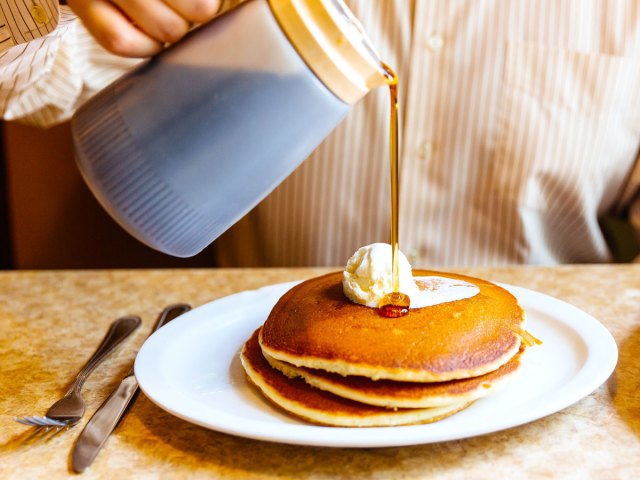
Nonsolid food items face more restrictions and must comply with the TSA’s 3-1-1 liquid rule. This applies to foods in the same way it applies to toiletries: Anything nonsolid must be in containers no larger than 3.4 ounces and fit inside a single quart-sized bag if it’s packed in your carry-on. If you plan to bring larger quantities of these items, pack them in your checked luggage where there are no size limits, as long as they stay within the airline’s weight limits.
You might be surprised to learn that some of your favorite spreadable and scoopable foods fall under the liquids category. This includes cream cheese, jams and jellies, peanut butter, yogurt, ice cream, and even wet pet food. (If you bring an already-made PB&J sandwich, that counts as a solid food, but if you’re bringing a separate container of jelly or peanut butter, that would be considered a liquid.)
Some popular souvenirs are also considered liquids, including pourable items such as maple syrup, honey, salsa, salad dressing, sauce, and soup. Most of the time, these items are sold in containers larger than 3.4 ounces, so be sure to pack them in your checked luggage to avoid having them confiscated at the security checkpoint.
Notably, certain essentials — such as baby formula, milk, baby food, and medically necessary liquids — are permitted in “reasonable quantities” exceeding 3.4 ounces. Just remember to declare these at the security checkpoint for a smooth journey.
Fresh Fruits, Vegetables, and Meats
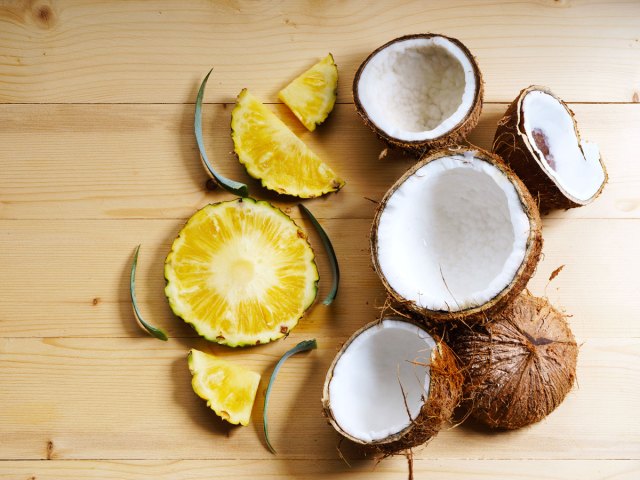
Fresh fruits and vegetables are not always allowed, especially when traveling from or between certain regions. For example, if you’re flying from Hawaii, Puerto Rico, or the U.S. Virgin Islands to the mainland U.S., most fresh produce is banned due to the risk of invasive pests. However, the USDA does permit some popular souvenir items, such as coconuts and pineapples, if they’re inspected and declared. Other popular produce from Hawaii, such as papaya, dragon fruit, and lychee, is allowed into the mainland only when properly packaged and labeled by a USDA-approved facility.
International travelers face even stricter produce regulations. According to U.S. Customs and Border Protection, even an uneaten apple from your meal at the airport could be confiscated if it wasn’t declared upon arrival, depending on its origin.
In addition to fresh fruits and vegetables, certain types of fresh meat products and liquid cheeses also face restrictions for international travel. When entering the U.S., you’ll have to declare all agricultural or wildlife products; for specific regulations regarding these items, be sure to check the USDA’s helpful Animal and Plant Health Inspection Service website.
While these agricultural rules may seem strict, it’s for good reason. A Mediterranean fruit fly outbreak in the 1980s — caused by a single piece of infected fruit — cost California and the federal government over $100 million in eradication efforts. To prevent having your produce confiscated at the airport, always check USDA or CBP guidelines before bringing produce across state or international borders.
Frozen Items
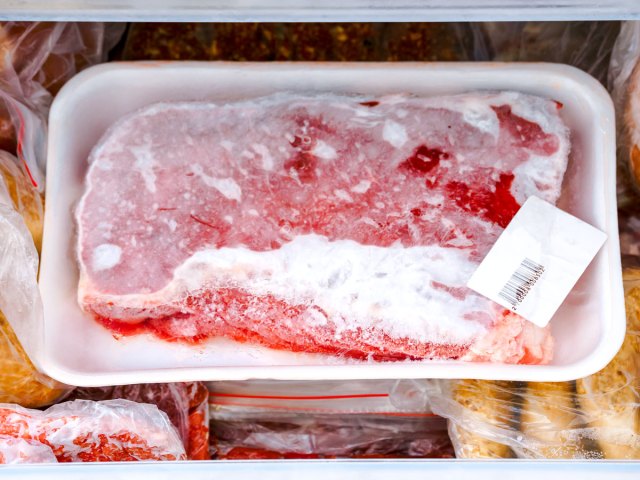
Considering bringing home frozen meat or seafood from your next vacation? Surprisingly, you can pack frozen items in both carry-on and checked bags, but there are some caveats.
Any frozen food, including meat, seafood, and ice cream, must be completely frozen solid at the time of screening, with no excess liquid in its container. If it is packed with ice or gel packs, these must also be frozen solid. If the ice is even partially melted or slushy, the TSA will not permit the cooler to pass through security.
Passengers may also pack frozen foods in carry-on or checked luggage using dry ice. However, the FAA limits each passenger to 5 pounds of dry ice. It must also be packaged properly and have appropriate ventilation, as dry ice releases carbon dioxide gas.
Alcoholic Beverages

Alcoholic beverages are among the most popular souvenirs and gifts. However, there are some restrictions regarding their size, alcohol content, and packaging. In carry-on luggage, only mini bottles (those measuring 3.4 ounces or less) are permitted. They must also adhere to the 3-1-1 rule and fit in a single quart-sized bag, and any personal alcohol you bring on board may not be consumed on the plane. Any bottle of alcohol larger than 3.4 ounces (100 milliliters) must be packed in checked luggage.
Additional restrictions apply. Alcohol under 24% ABV (alcohol by volume), which includes wine and beer, has no volume limit, but it must still comply with the airline’s weight limit for checked luggage. However, alcohol between 24% and 70% ABV (e.g., spirits or liqueurs like limoncello) is limited to 5 liters (1.3 gallons) per passenger, and it must still be in its retail packaging. Beverages over 70% ABV, such as grain alcohol or 151-proof rum, are not permitted in any airline luggage.
In summary, while flying with solids is usually fine, it’s essential to check with the TSA and other agencies such as U.S. Customs and Border Protection for restrictions on less common items such as liquids, nonsolid items, frozen foods, fresh produce, and alcoholic beverages.
More from our network
Daily Passport is part of Inbox Studio, which publishes content that uplifts, informs, and inspires.






